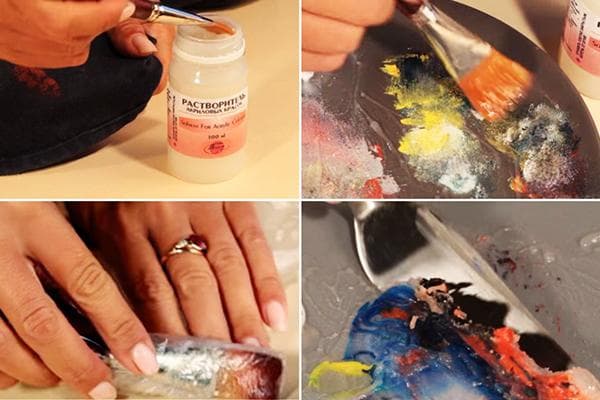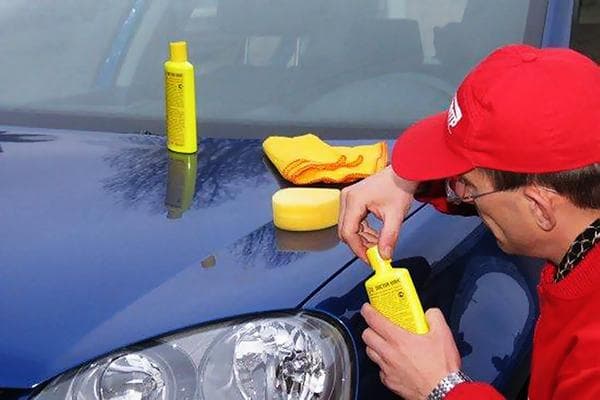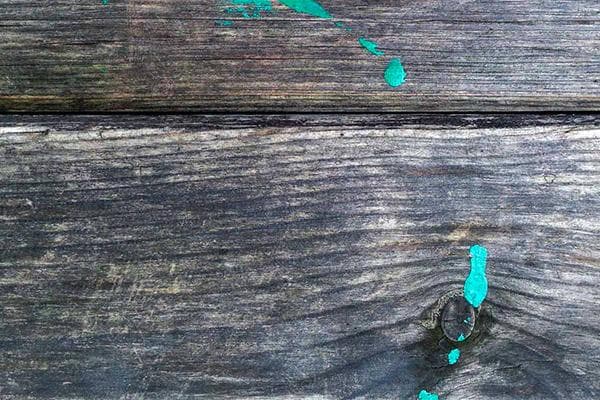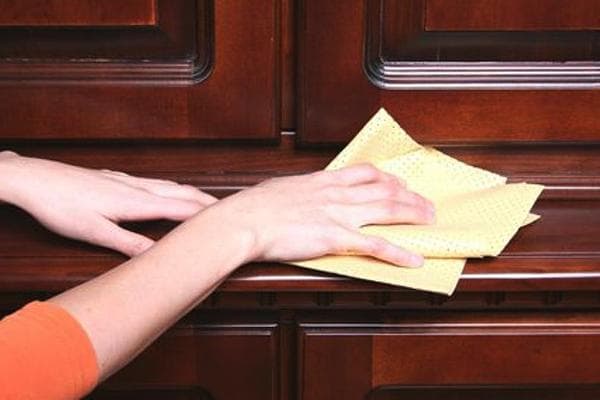How to remove acrylic paint from fabric, plastic and other surfaces?
A stain or drop of acrylic paint on fabric, a car, or furniture is difficult to remove. To wash it, you need to choose the right removal method.

Elimination Features
A water-soluble composition is a complex chemical compound that lies smoothly on the surface and does not run off after application. Unlike oil paints, acrylic paints do not smell, do not crack and dry quickly. Copolymers are responsible for hardening, forming a strong film after processing.
- During the first 60 minutes, the paint can be washed off with warm water. If you soak dirty clothes and brushes in the liquid for half an hour, the composition will come off. Fresh acrylic does not have time to harden and be absorbed, so no special means or mechanical impact are needed.
- It is more difficult to remove the paint after 1–2 hours. A film forms on the surface, which is difficult to get rid of. To destroy the top layer, hard brushes, scrapers and degreasing compounds are used. The solution is applied to the stain for 30–60 minutes, the pigment is removed mechanically and washed off under running water.
- It is very difficult to wash off acrylic paint after a day. The film on the surface has dried and become hard, so to soften it you will need caustic compounds (acetone, white spirit). The painted area is cleaned of contaminants, treated with a solvent and a brush (scraper). Rinse thoroughly with warm water and repeat the procedure.
Industrial paint removers
Acrylic remover is a chemical that will help remove stains from the surface. A safe, gasoline- and alcohol-based cleaner that dissolves even old layers of paint. The product is applied to the stain, left for 30 minutes to 4 hours, then removed with a spatula. The liquid has a gentle effect on surfaces and retains its characteristics even at low temperatures.
Universal cleaner does not contain acetone. When working, it does not leave marks on upholstery, floors and walls, but is prohibited for plastic and varnished parts. The product is released in the form of a spray, which is sprayed over the painted area. After 2 minutes, remove the remaining chemical with acrylic with a dry cloth.
When working with solvents, be sure to protect your hands with gloves and your face with a gauze bandage. If the procedures were carried out indoors, then open the windows for ventilation. Cleaned items are washed and surfaces are washed with soapy water.
Remove acrylic from a car
It is better to remove paint from the car before the stains dry. Add shampoo or dish detergent to a bucket of warm water. A soft sponge is moistened in liquid and gently passed over the contaminated surface.
If the drops have hardened, it is better to use chemical solvents. Acetone, which is used to treat car parts, will help remove acrylic from plastic, metal and fabric. After the top layer has softened, carefully scrape off the dirt with a brush. Aggressive substances are prohibited from being used on a painted car body.
White spirit will remove paint without affecting the appearance of the car. The drug is applied to the stains, left for 15 minutes, then wiped with a sponge. Dirt is removed from the glass using a thin blade. To avoid damaging the bodywork, do not use rough scrapers.Removing drops can take place in several stages: gradually remove all layers.
If the stains are dry, then special chemicals are preferred:
- Clay for cleaning. The kit includes an abrasive and a cleaning spray. After removing the stains, treat the area with polishing wax.
- Brake pad cleaner. A rag is moistened with the solution and gently rubbed over the area with the stain.
- Anti-scratch paste. It will help you safely wipe off pigment from the surface. The mixture is applied to a porous cloth and the stained areas are slowly wiped.
Remove acrylic paint from floors and walls
A mixture of vinegar, ammonia and salt will help remove small fresh drops from linoleum and laminate flooring. The coating is washed with cold water, then the mixture is applied to the paint with a sponge. As the product dries, re-moisten the product and carefully remove the loose layers.
Old dried stains from wood, concrete and brick surfaces can be removed with a special gel remover. A mixture of organic disintegrants and solvents has a strong chemical odor. A thick suspension in a glass or tin jar is sold in hardware and construction stores. Apply the product in a thick, even layer to the floor or wall with a roller and leave for an hour. After peeling off the acrylic, the dirt is removed with a spatula, the cleaned area is washed with water and sanded with sandpaper.
Old drops are removed from wood using a hair dryer. The device is aimed at the contaminated area for several minutes. Hot air softens the coating, after which the layer can be easily removed with a metal scraper. The surface is sanded with a grinder, then wiped generously with a sponge and soapy water.
A solvent such as acetone or white spirit will help remove acrylic from tiles. Apply the product to the stains and leave for 2 hours.Use a spatula or thin blade to peel the paint off the ceramic, being careful not to scratch the surface. If the drops have hardened for a long time, then the procedure is repeated until the contamination disappears.
Clean acrylic from furniture
Vinegar with ammonia and extra salt will help remove small stains from wooden facades. The substances are mixed in proportions 2:2:1, applied to the surface with a toothbrush, left until dry and washed off. Cover the contaminated area with a mixture of baking soda and water (2:1), leave for 30 minutes, and carefully clean with a scraper.
If the furniture is varnished, then abrasives should not be used. Moisten the contaminated area with warm water and apply liquid soap. The procedure is repeated every 30 minutes until the drops dissolve.
White spirit will help remove paint from glass facades and shop windows. Apply the product onto the surface with a cloth and leave for half an hour. To avoid leaving scratches on the gloss, do not use hard brushes or scrapers. Using a blade, carefully scrape off any remaining acrylic from the transparent surface. After this, wash the glass generously with water with the addition of ammonia (2-3 teaspoons per 5 liters of liquid).
Methods for removing dried paint from upholstery depend on the material. Chemical solvents (gasoline, acetone) will help remove stains from fabric. If the contamination is not severe, then soda will handle the dirt. Apply wet powder to the surface and wipe with a brush with plastic bristles every 30 minutes. For leather and leatherette coatings, it is better to use white spirit.
For furniture it is prohibited to use:
- turpentine;
- denatured alcohol;
- kerosene.
Brake fluid or Krot sewer pipe cleaner will help remove old stains from plastic. After peeling off the paint, wash the surface thoroughly with soapy water.If you need to remove acrylic from a three-dimensional decor, then use silicone sealant. The building material is applied to the contamination, and after 12 hours it is cut off with a scalpel, removing the silicone along with the drops.
Remove paint from clothes
Dried stains are difficult to remove from fabric, so it is better to do this in the first 1-2 hours. To prevent fresh paint from spreading on clothing, blot the area with a paper towel. Do not rub the drops, otherwise the paint will have time to absorb and take over large areas.
There are quite a few ways to clean fabric from acrylic paint:
- Acrylic is treated with isopropyl alcohol, after which the dirt is scraped off with a brush, knife or the end of a coin.
- Caustic solutions will help clean things from acrylic stains. In a bowl, mix a glass of vinegar and ammonia, add a spoonful of salt. The fabric is moistened, then wiped with a sponge soaked in a chemical (be sure to do this near an open window or outside!). The contaminated areas are rubbed until the acrylic dissolves, after which the items are washed in a machine.
- If the drops are fresh, they are removed with tape. The adhesive tape is applied to the affected areas, then removed without a sharp jerk.
- Paint on jeans can be removed with household detergents. Washing powder and vinegar are mixed in a 1:1 ratio, applied to the material, and left for 1 hour. Oxygen bleach (Vanish Oxi Action, Mister DEZ, Dr. Beckmann), to which baking soda and water are added in equal proportions, helps remove stains. To wash acrylic, you need mechanical action. Use a toothbrush to forcefully brush over the surface, rubbing the mixture over contaminated areas.
- To combat old stains, it is better to use white spirit or gasoline.
Clothes made of delicate fabric will not withstand treatment with aggressive solvents and folk remedies.To remove paint from the material, it is better to take the items to the dry cleaner. Experts will assess the extent of damage and the possibility of getting rid of contaminants.
Acrylic paint dries quickly, making stains difficult to remove. The speed and efficiency of removal depends on the chosen technique and the degree of polarization of the raw material. To prevent damage to things, protective clothing is used when working with building materials. The car, interior items, and floors are protected from drops with plastic film.





I wiped off the acrylic paint from the sofa with baking soda. I rubbed it gently with a brush several times, and in the end everything washed off.